Sears wasn’t just a retail giant. From 1908 to 1942, Sears dipped its toes into the housing business by selling innovative catalog homes. From craftsman bungalows to colonial revivals, Sears catalog homes offered an affordable path to homeownership in the United States.
Read through as I explore the history, lasting impact, and value of these iconic mail-order houses today, along with tips on marketing them.
In 1908, Sears, Roebuck and Company, more commonly known as Sears, launched its first Sears Modern Homes Catalog. Prospective homeowners could choose from various home models in the catalog, place an order, and receive the home kit by mail.
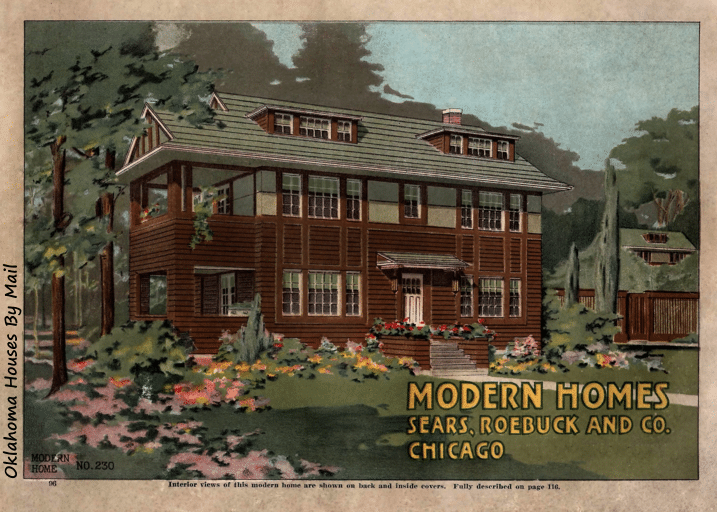
A Sears Modern Homes catalog in 1912 (Source: Internet Archive)
That year, the base price for a Sears home kit was approximately $6501, equivalent to around $22,000 today. Of course, that price didn’t cover the land, electrical, and plumbing — it only included the necessary materials (e.g., lumber, shingles, millwork) and building instructions. These weren’t flimsy materials; Sears delivered high-quality, pre-cut pieces that were made to last.

Actual houses built by Sears home kit buyers (Source: Internet Archive)
The 1910s proved to be another successful time for Sears Modern Homes. The company streamlined home kit production, established regional shipping warehouses, and offered payment plans. Sears catalogs became a favorite source for clothing, appliances, homes, and furniture — a one-stop shop for every American. Families built their dream homes from Sears kits, highlighting the ease of assembly.
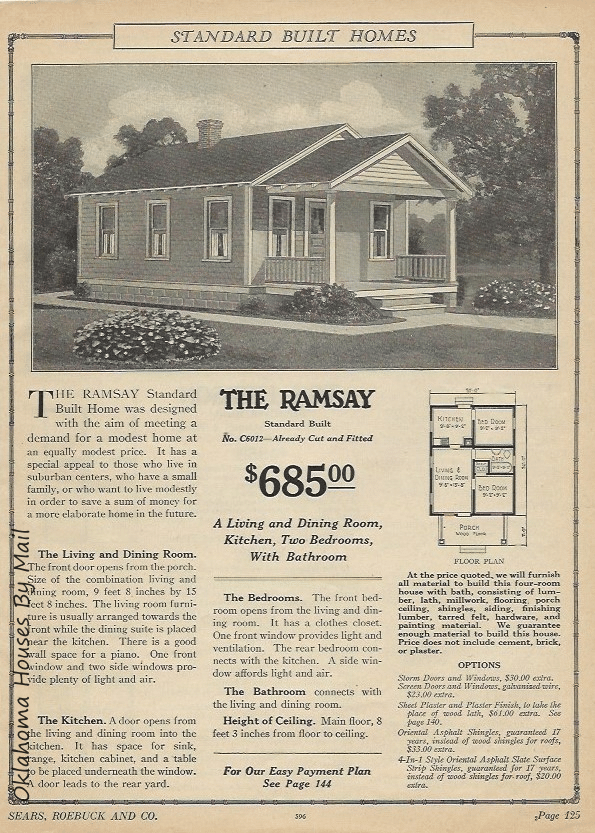
The Ramsay (Source: Internet Archive)
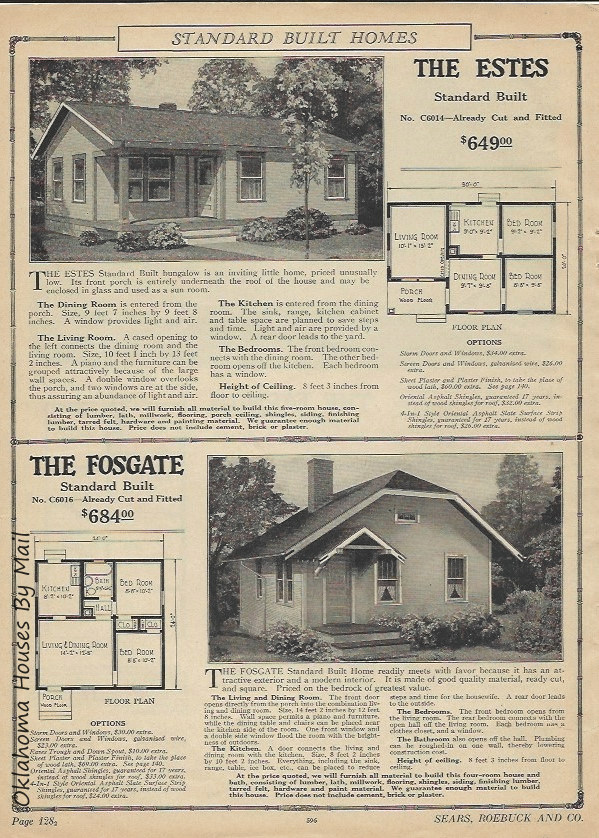
The Estes & The Fosgate (Source: Internet Archive)
By 1915, Sears continued to innovate by offering a wider range of home styles. The Sears Modern Homes Catalog featured around 370 models, with approximately 80 to 100 models in each issue, catering to diverse preferences, budgets, and family sizes.
The popularity of Sears catalog homes soared throughout the 1920s, fueled by a thriving economy and the convenience of mail-order purchasing. Sears also recognized the growing demand for modern amenities and began offering electrical wiring and plumbing fixtures as add-ons in their kits.
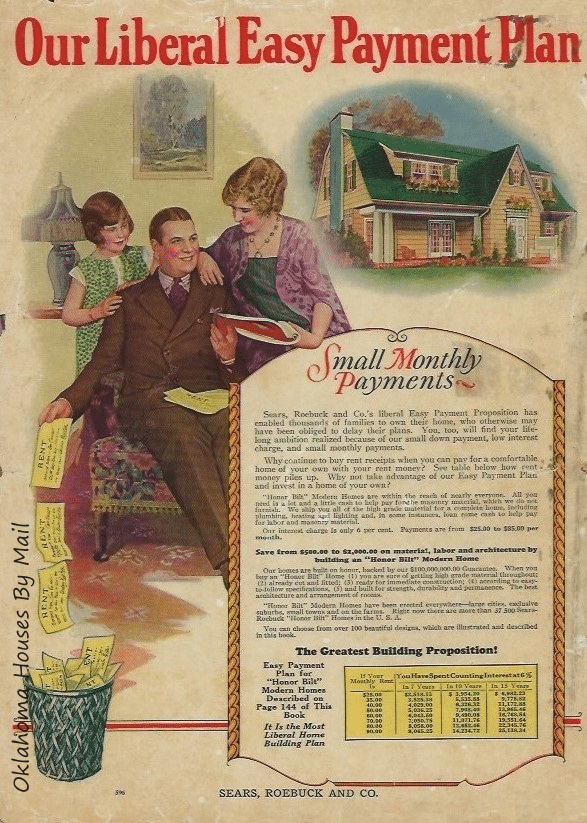
Financing options for Sears home kits (Source: Internet Archive)
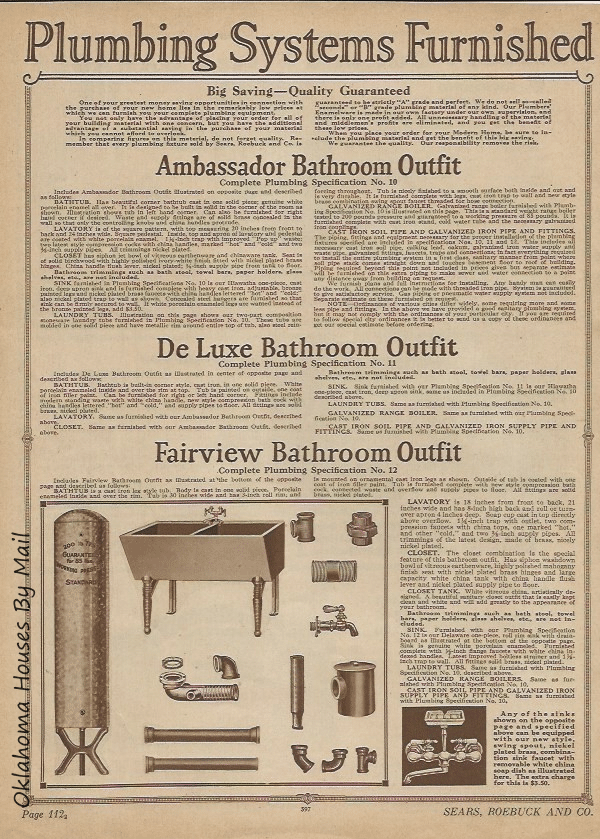
Plumbing fixtures can be added to home kits (Source: Internet Archive)
During the Great Depression of the 1930s, Sears continued to offer smaller, more affordable houses to cater to tighter budgets and changing market demands. However, despite these more economical housing solutions, Sears’ sales still dipped. As a result, Sears stopped selling home kits in 1940, marking the end of a significant era.
Sears may have ceased its mail-order housing business, but its legacy remains. According to reports, Sears sold more than 70,000 home kits.2 Although Sears no longer sells home kits, many of these houses still stand and become available on the market. You might even stumble upon some of them on property listing sites!
While there is no fixed price for a Sears home today, listings typically range from $300,000 to over $1 million. The continuous presence of Sears homes in the housing market only proves their timeless appeal, which continues to attract buyers.
Think your current gorgeous bungalow listing arrived by mail order during the 1930s? Here’s how to crack the code and see if you got a Sears house listing:
Study the construction materials used in the house. Popular home styles associated with Sears houses include Craftsman bungalows, Tudors, and Colonial Revivals. These styles usually featured low-sloped roofs, elaborate chimneys, and spacious front porches, mostly constructed with pre-cut pieces, pre-cut lumber, and asphalt shingles.
Look for markings such as stamped lumber in the basement or attic, as these were used to assist in construction. Not all Sears houses have these letter and number markings, but their presence is a vital clue. Additionally, check behind millwork, such as window trims and baseboards, for some shipping labels. Sears attached these labels to some pieces, so look for markings indicating the house’s origin.
Gather information about the house’s original owner and construction date. Explore the archives and historical records in your local library to learn more about the house’s origins and its potential ties to Sears catalog designs. Check if the house was built when Sears home kits were popular.
If you’re still unsure whether you have a Sears house, consider seeking a professional’s opinion or consulting with someone familiar with Sears homes. You can also contact historians, preservation specialists, or organizations identifying properties with architectural histories.
Additionally, you can join online communities or forums, such as Facebook groups and Reddit threads, dedicated to Sears homes. Connect with other Sears homeowners and enthusiasts who can guide your research.
Curious how much these Sears kit homes have climbed in value over the decades? Here’s a side-by-side comparison of some of their original catalog prices, adjusted for inflation, alongside what they’re currently fetching on the market.
[TD]$6,488 (1921)[/TD]
[TD]$86,700[/TD]
[TD]$310,600 (Off-market; 2025 Zestimate)[/TD]
[TR]
[TD]Vallonia[/TD]
[TD]$1,979 (1920)[/TD]
[TD]$32,000[/TD]
[TD]$245,000 (2024)[/TD]
[/TR]
[TR]
[TD]Starlight[/TD]
[TD]$1,200 (1922)[/TD]
[TD]$20,000[/TD]
[TD]$160,000 (2016)[/TD]
[/TR]
[TR]
[TD]Barrington[/TD]
[TD]$2,425 (1926)[/TD]
[TD]$43,839[/TD]
[TD]$325,000 (2024)[/TD]
[/TR]
Note: Inflation-adjusted prices are approximate and based on historical inflation rates. Recent sale prices can vary significantly based on location, condition, and cultural value.
While you couldn’t order a Sears house from today’s catalog anymore, many of these iconic houses still stand. If, by any chance, you own one or are about to have one as your listing, you might be surprised by its current value. And believe it or not, these Sears modern homes don’t even stay on the market long!
Here are some Sears kit homes that were just sold over the past year:
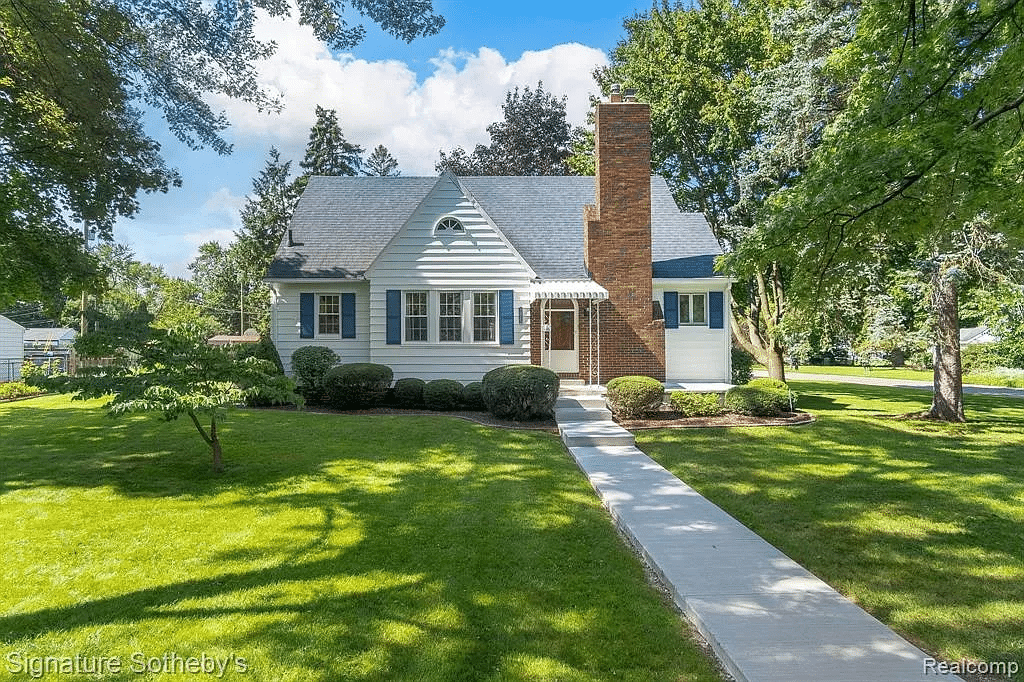
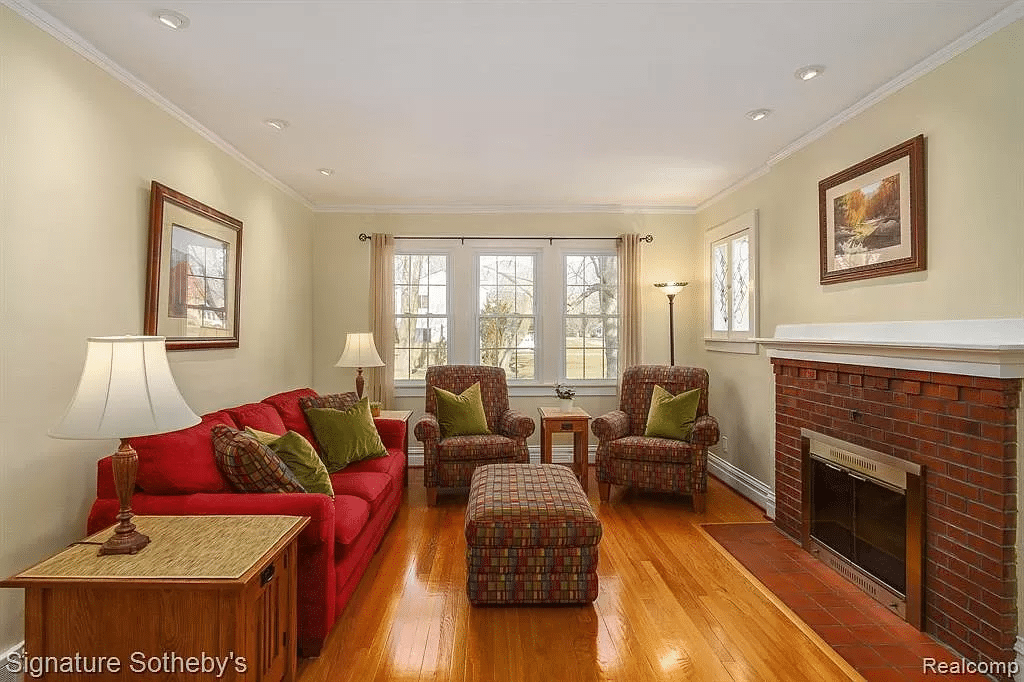
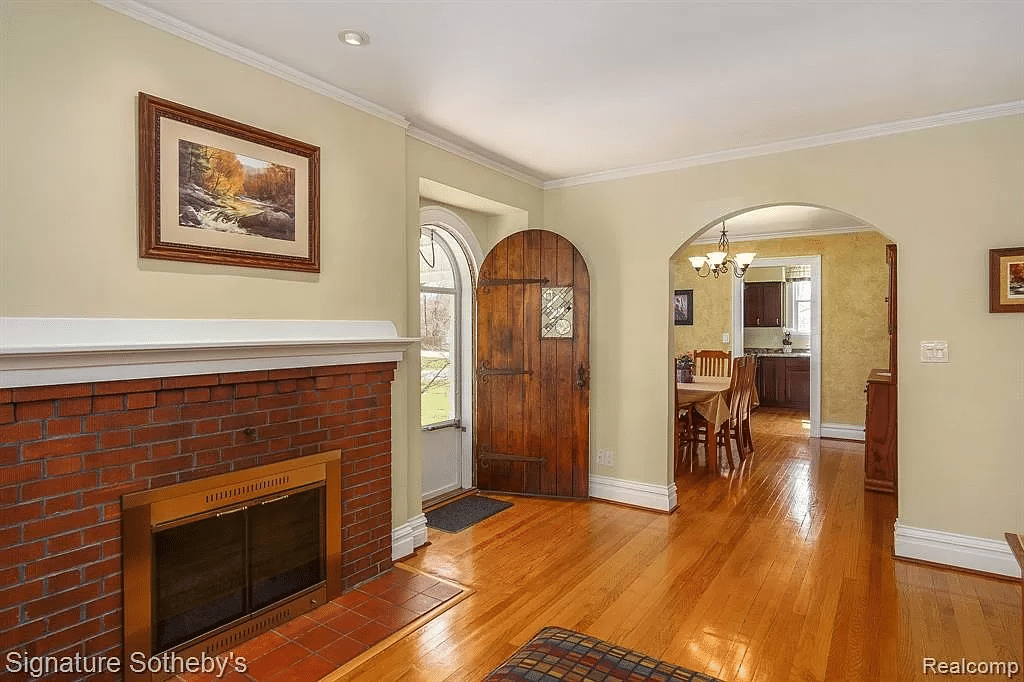
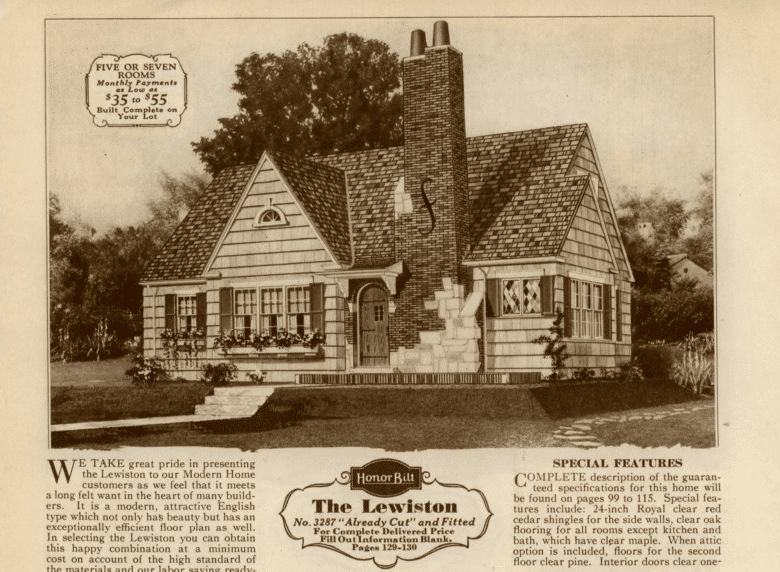
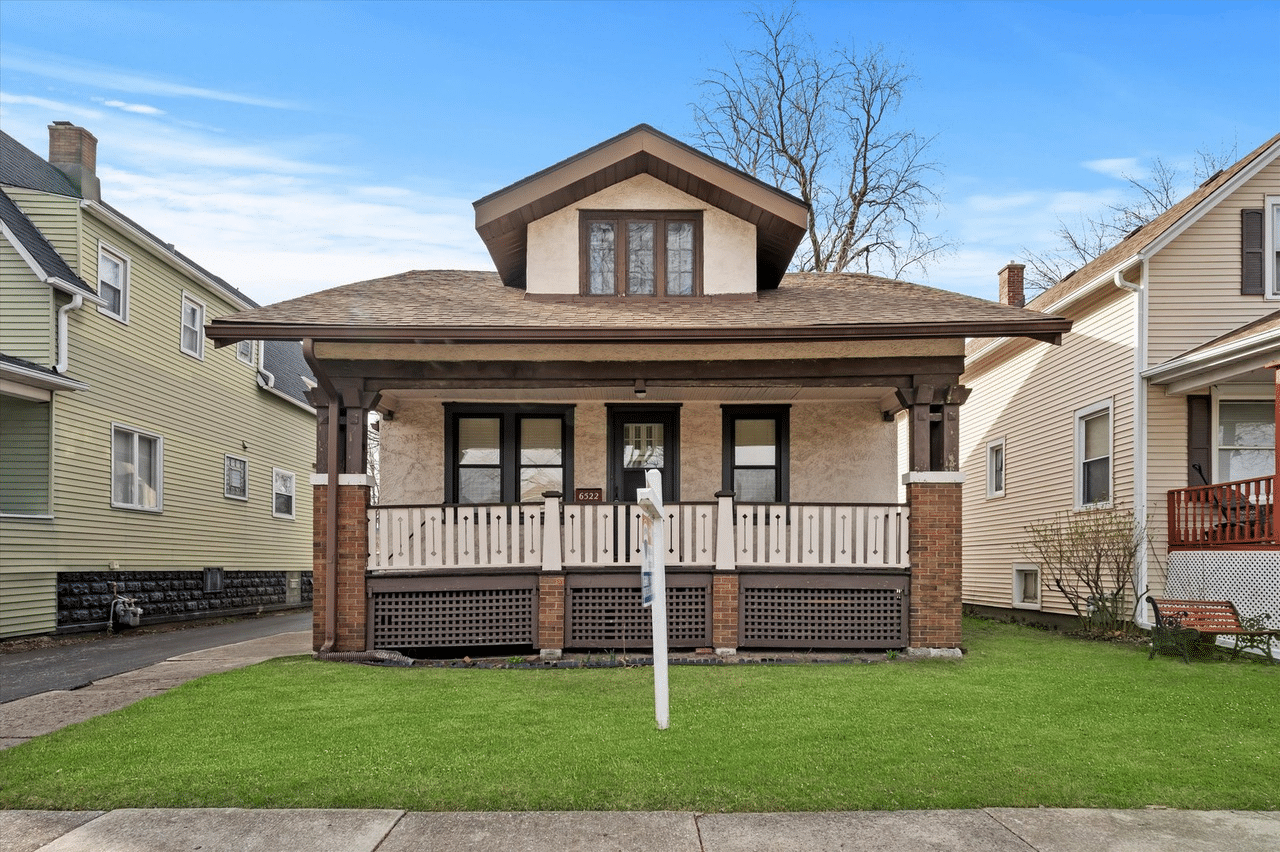
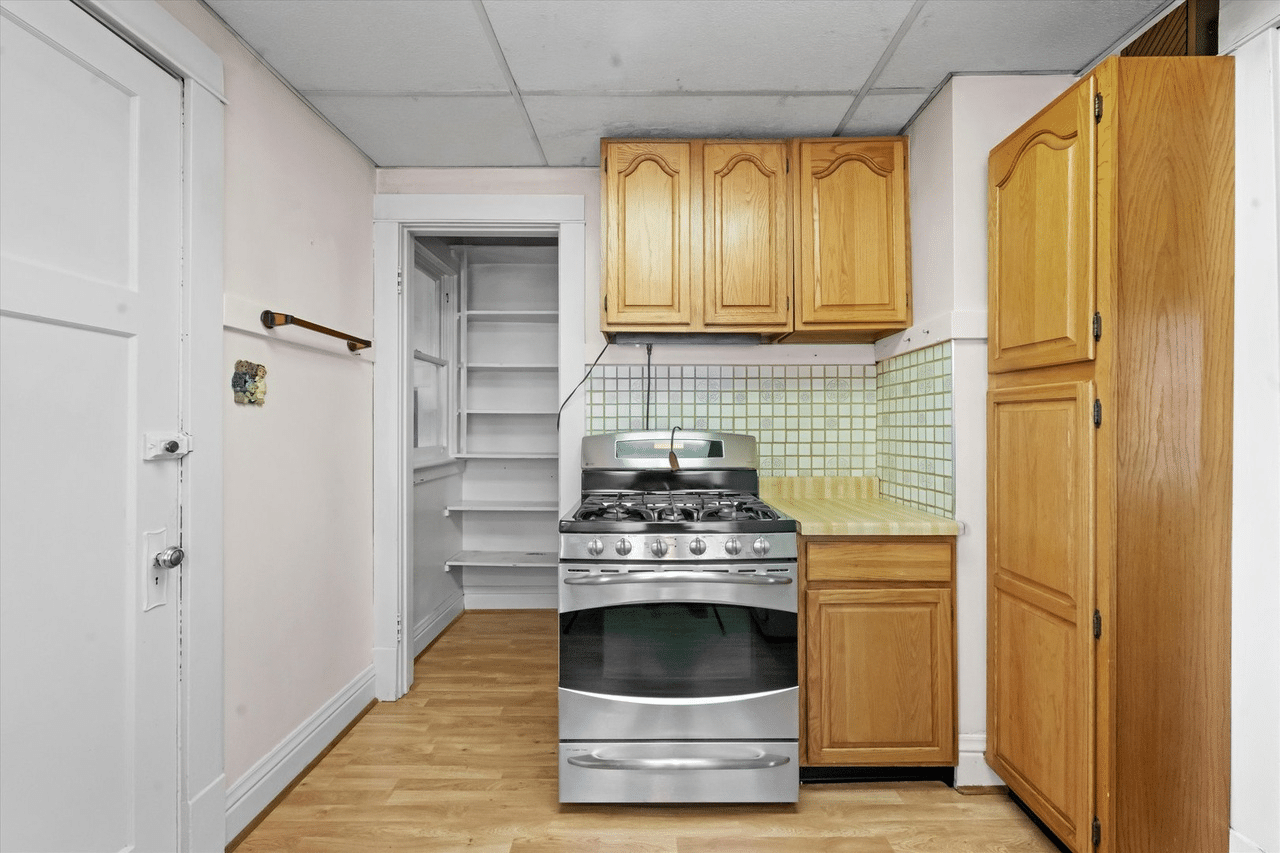

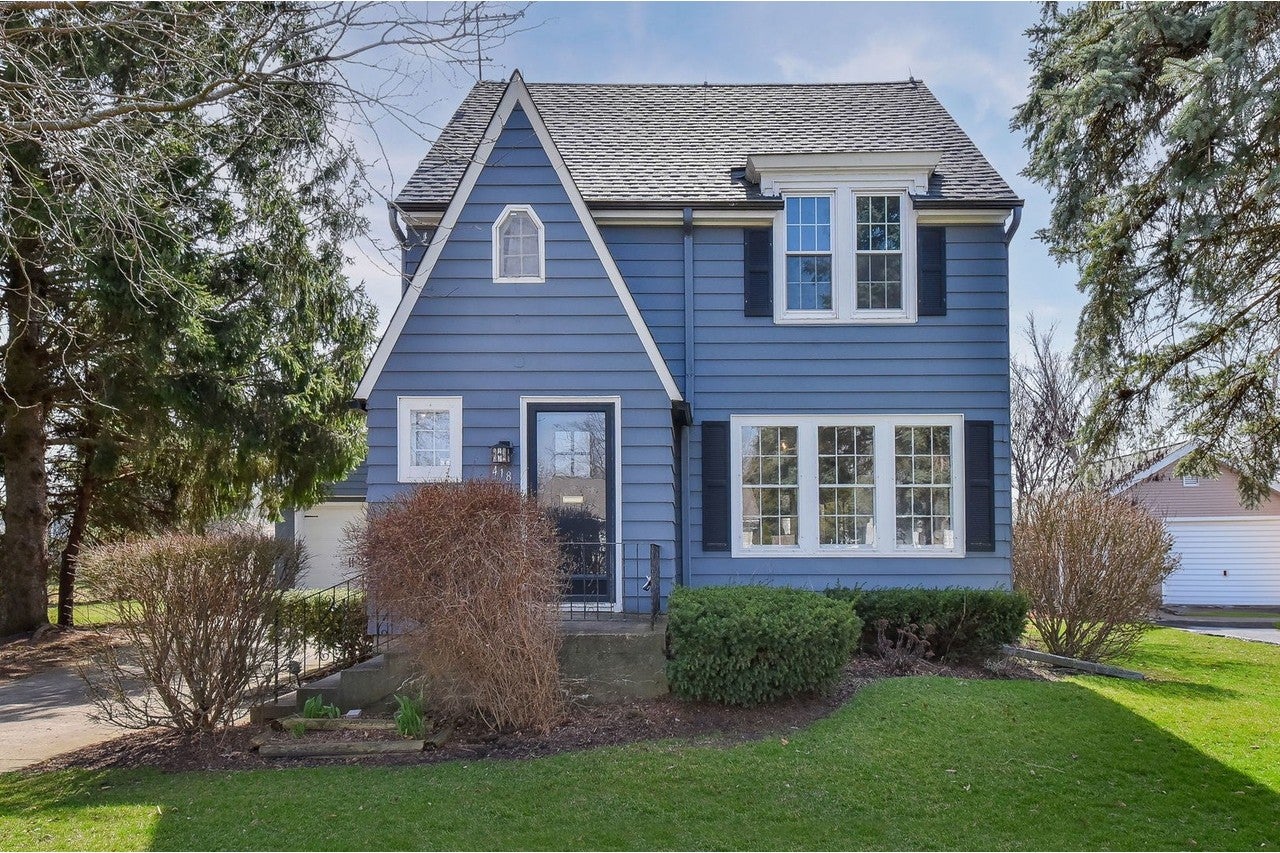
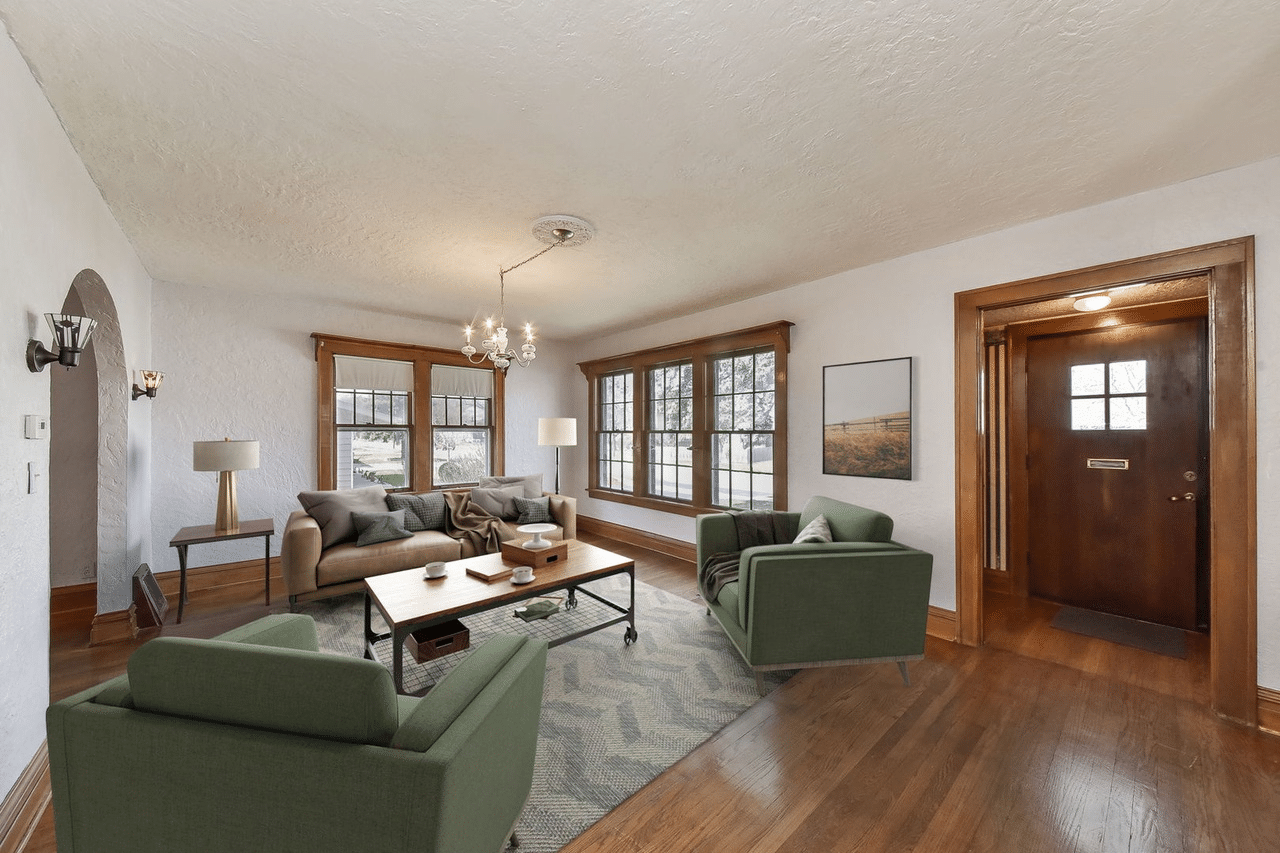

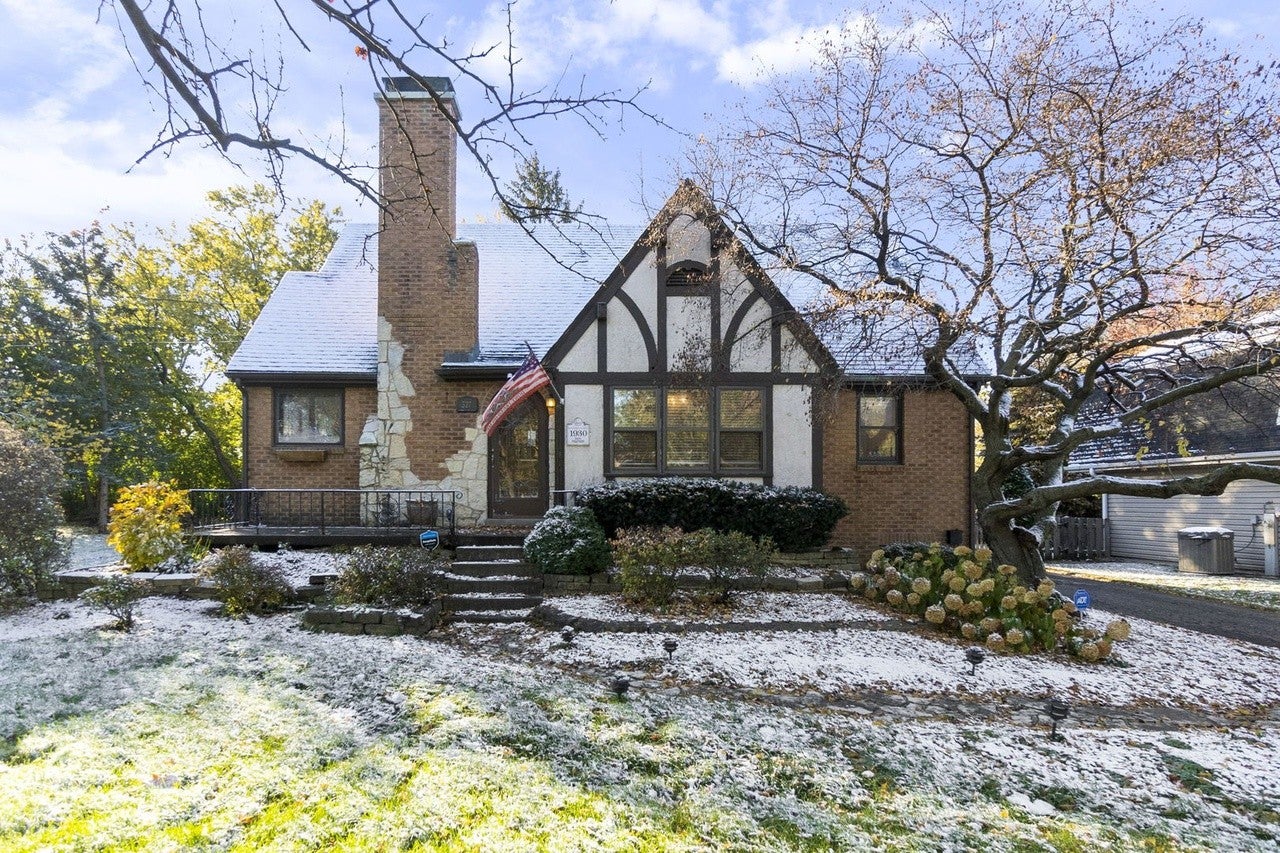
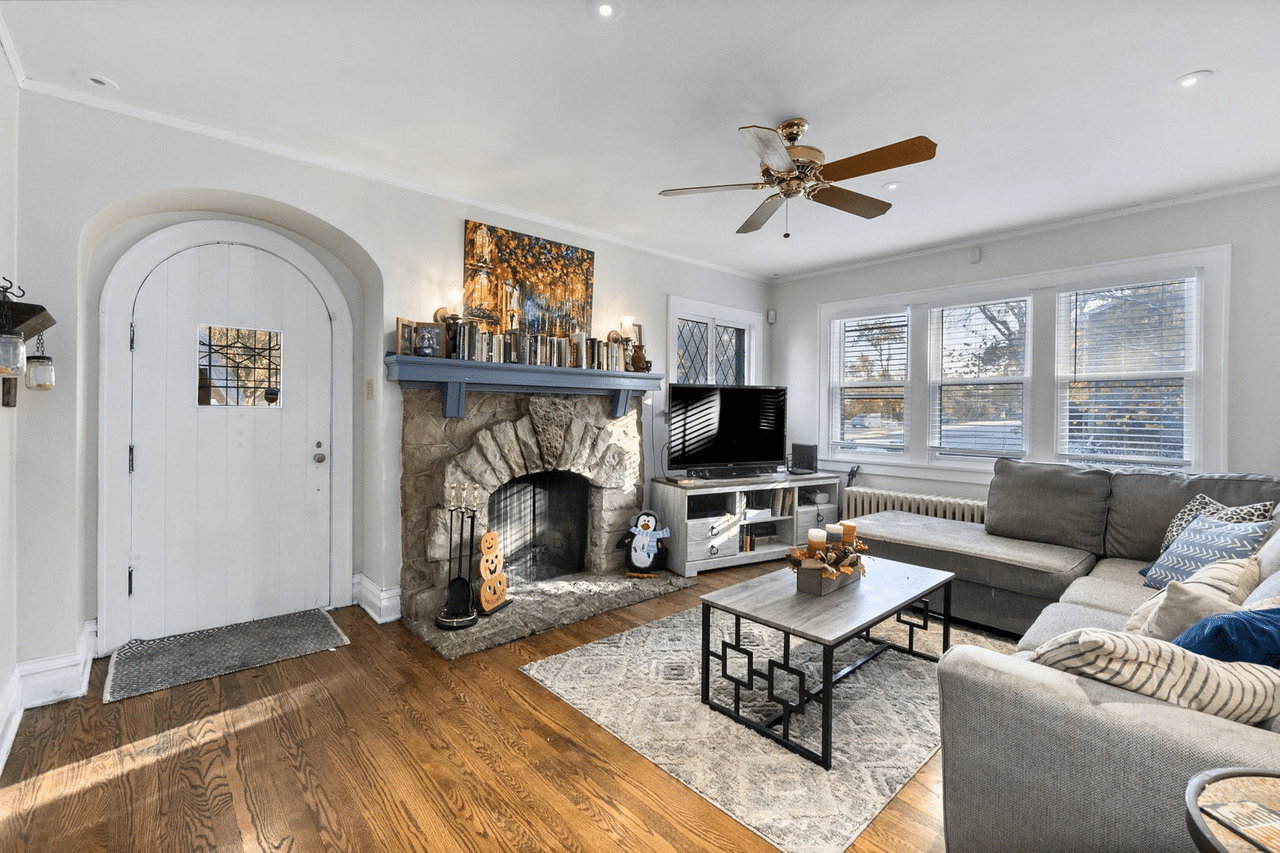

Promoting Sears kit homes can be a unique opportunity for real estate agents! Contrary to popular real estate belief, property listings don’t sell themselves, so here are several strategies that real estate agents can employ to market Sears catalog homes effectively:

Unfortunately, Sears stopped selling kit homes in the 1940s. However, many Sears kit homes still exist across various states and are preserved by homeowners.

Look for your home’s unique features, such as stamps on lumber and shipping labels. Additionally, check local archives and old Sears catalogs to see if your house matches any Sears home plans. For more information, check our section above on identifying a Sears kit home.

Illinois, Michigan, and Ohio have the highest number of Sears houses due to the popularity of mail-order shopping at the time. Other states, particularly California, Massachusetts, and New York, also saw a surge in these catalog homes.

Despite their age, Sears houses still hold significant value in today’s real estate market. Many prospective buyers and homeowners are drawn to Sears houses’ craftsmanship, considering them part of American architectural history. Sears catalog home values often appreciate over time, especially when they’re well-maintained and situated in sought-after neighborhoods.

Prospective buyers used to browse the Sears house catalog, select a house from the featured designs, and place an order. The company would then ship a Sears Roebuck house kit containing pre-cut lumber, windows, doors, roofing materials, and a detailed construction plan to be assembled by the buyer or a hired contractor.
Sears houses are timeless classics, adorned with unique design elements and cherished for their historical significance. Have you seen any Sears houses in your neighborhood? Trying to sell one? Or are you looking to buy one? Tell us about your Sears house stories in the comments!
1Boston.com
2 USA Today
The post Sears Catalog Homes – Overview, History, Present Day appeared first on The Close.
Read through as I explore the history, lasting impact, and value of these iconic mail-order houses today, along with tips on marketing them.
The history of Sears catalog homes
In 1908, Sears, Roebuck and Company, more commonly known as Sears, launched its first Sears Modern Homes Catalog. Prospective homeowners could choose from various home models in the catalog, place an order, and receive the home kit by mail.

A Sears Modern Homes catalog in 1912 (Source: Internet Archive)
That year, the base price for a Sears home kit was approximately $6501, equivalent to around $22,000 today. Of course, that price didn’t cover the land, electrical, and plumbing — it only included the necessary materials (e.g., lumber, shingles, millwork) and building instructions. These weren’t flimsy materials; Sears delivered high-quality, pre-cut pieces that were made to last.

Actual houses built by Sears home kit buyers (Source: Internet Archive)
The 1910s proved to be another successful time for Sears Modern Homes. The company streamlined home kit production, established regional shipping warehouses, and offered payment plans. Sears catalogs became a favorite source for clothing, appliances, homes, and furniture — a one-stop shop for every American. Families built their dream homes from Sears kits, highlighting the ease of assembly.

The Ramsay (Source: Internet Archive)

The Estes & The Fosgate (Source: Internet Archive)
By 1915, Sears continued to innovate by offering a wider range of home styles. The Sears Modern Homes Catalog featured around 370 models, with approximately 80 to 100 models in each issue, catering to diverse preferences, budgets, and family sizes.
The popularity of Sears catalog homes soared throughout the 1920s, fueled by a thriving economy and the convenience of mail-order purchasing. Sears also recognized the growing demand for modern amenities and began offering electrical wiring and plumbing fixtures as add-ons in their kits.

Financing options for Sears home kits (Source: Internet Archive)

Plumbing fixtures can be added to home kits (Source: Internet Archive)
During the Great Depression of the 1930s, Sears continued to offer smaller, more affordable houses to cater to tighter budgets and changing market demands. However, despite these more economical housing solutions, Sears’ sales still dipped. As a result, Sears stopped selling home kits in 1940, marking the end of a significant era.
Sears may have ceased its mail-order housing business, but its legacy remains. According to reports, Sears sold more than 70,000 home kits.2 Although Sears no longer sells home kits, many of these houses still stand and become available on the market. You might even stumble upon some of them on property listing sites!
While there is no fixed price for a Sears home today, listings typically range from $300,000 to over $1 million. The continuous presence of Sears homes in the housing market only proves their timeless appeal, which continues to attract buyers.
How to identify a Sears kit home
Think your current gorgeous bungalow listing arrived by mail order during the 1930s? Here’s how to crack the code and see if you got a Sears house listing:
1. Inspect parts of the house
Study the construction materials used in the house. Popular home styles associated with Sears houses include Craftsman bungalows, Tudors, and Colonial Revivals. These styles usually featured low-sloped roofs, elaborate chimneys, and spacious front porches, mostly constructed with pre-cut pieces, pre-cut lumber, and asphalt shingles.
2. Identify unique markings & consult Sears catalogs
Look for markings such as stamped lumber in the basement or attic, as these were used to assist in construction. Not all Sears houses have these letter and number markings, but their presence is a vital clue. Additionally, check behind millwork, such as window trims and baseboards, for some shipping labels. Sears attached these labels to some pieces, so look for markings indicating the house’s origin.
3. Research the house’s history
Gather information about the house’s original owner and construction date. Explore the archives and historical records in your local library to learn more about the house’s origins and its potential ties to Sears catalog designs. Check if the house was built when Sears home kits were popular.
4. Seek an expert’s opinion
If you’re still unsure whether you have a Sears house, consider seeking a professional’s opinion or consulting with someone familiar with Sears homes. You can also contact historians, preservation specialists, or organizations identifying properties with architectural histories.
Additionally, you can join online communities or forums, such as Facebook groups and Reddit threads, dedicated to Sears homes. Connect with other Sears homeowners and enthusiasts who can guide your research.
Then vs now: Sears home prices over time
Curious how much these Sears kit homes have climbed in value over the decades? Here’s a side-by-side comparison of some of their original catalog prices, adjusted for inflation, alongside what they’re currently fetching on the market.
| Sears house model | Original price (year) | Inflation-adjusted price (2025) | Recent sale price |
|---|---|---|---|
| Magnolia |
[TD]$86,700[/TD]
[TD]$310,600 (Off-market; 2025 Zestimate)[/TD]
[TR]
[TD]Vallonia[/TD]
[TD]$1,979 (1920)[/TD]
[TD]$32,000[/TD]
[TD]$245,000 (2024)[/TD]
[/TR]
[TR]
[TD]Starlight[/TD]
[TD]$1,200 (1922)[/TD]
[TD]$20,000[/TD]
[TD]$160,000 (2016)[/TD]
[/TR]
[TR]
[TD]Barrington[/TD]
[TD]$2,425 (1926)[/TD]
[TD]$43,839[/TD]
[TD]$325,000 (2024)[/TD]
[/TR]
Note: Inflation-adjusted prices are approximate and based on historical inflation rates. Recent sale prices can vary significantly based on location, condition, and cultural value.
How much are Sears houses worth today?
While you couldn’t order a Sears house from today’s catalog anymore, many of these iconic houses still stand. If, by any chance, you own one or are about to have one as your listing, you might be surprised by its current value. And believe it or not, these Sears modern homes don’t even stay on the market long!
Here are some Sears kit homes that were just sold over the past year:
3325 Warringham Ave, Waterford, Michigan
- Asking price: $342,000

- Sears house model: Lewiston

- Year built: 1929





A white Sears Lewiston home (Source: Zillow)
A single-family property with solid wood floors throughout (Source: Zillow)
And a lovely wooden arched door! (Source: Zillow)
The Lewiston (Source: Sears Houses in Ohio)
A single-family property with solid wood floors throughout (Source: Zillow)
And a lovely wooden arched door! (Source: Zillow)
The Lewiston (Source: Sears Houses in Ohio)
6522 33rd St, Berwyn, Illinois
- Asking price: $245,000

- Sears house model: Vallonia

- Year built: 1922




Cozy Vallonia sold for almost $250K (Source: Redfin)
Look at that cute kitchen! (Source: Redfin)
The Vallonia (Source: Sears Houses in Ohio)
Look at that cute kitchen! (Source: Redfin)
The Vallonia (Source: Sears Houses in Ohio)
418 Ann St, West Chicago, Illinois
- Asking price: $325,000

- Sears house model: Barrington

- Year built: 1928




A beautiful Sears Barrington home (Source: Redfin)
Notice how Sears homes always have arched doorways (Source: Redfin)
The Barrington (Source: Sears Houses in Ohio)
Notice how Sears homes always have arched doorways (Source: Redfin)
The Barrington (Source: Sears Houses in Ohio)
327 Geneva Rd, Glen Ellyn, Illinois
- Asking price: $420,000

- Sears house model: Colchester

- Year built: 1926




A well-maintained Sears Colchester home (Source: Redfin)
Most parts of the house were kept, including doorways and stone fireplace (Source: Redfin)
The Colchester (Source: Sears Homes of Chicagoland)
Most parts of the house were kept, including doorways and stone fireplace (Source: Redfin)
The Colchester (Source: Sears Homes of Chicagoland)
How to market Sears kit homes today
Promoting Sears kit homes can be a unique opportunity for real estate agents! Contrary to popular real estate belief, property listings don’t sell themselves, so here are several strategies that real estate agents can employ to market Sears catalog homes effectively:
- Highlight facts and history about the Sears home: Educate buyers about the history and unique qualities of these homes. Create educational content, such as blog posts and videos (or share this article!) that highlight the appeal of Sears houses.
- Emphasize the home’s quality and craftsmanship: In your property listing descriptions, highlight the Sears house’s classic features. Mention its solid wood construction, iconic trim work, and spacious layouts. Stress their sturdiness and timeless charm, adding value and character.
- Network and target niche audiences: Identify individuals interested in Sears catalog homes and establish connections with potential leads to build a strong network. These individuals may be history buffs, artists, or enthusiasts of vintage homes. Invite them to property showings or open houses, and tailor your marketing efforts to these audiences.
- Create virtual tours: Produce high-quality photos and video walk-throughs to showcase the interior and exterior of Sears houses. Consider adding aerial shots to show the home’s surroundings and neighborhood appeal. Create virtual tours using software like Zillow 3D Home Tours, Matterport, and Asteroom.
- Host an open house: Organize open houses to promote your Sears house listing and attract interested buyers. Utilize various marketing channels, including local newspapers, neighborhood newsletters, and community events, to promote your open house.
- Social media marketing: Leverage social media sites like Facebook, Pinterest, Instagram, and TikTok to market Sears catalog homes for sale. Utilize targeted ads to reach specific demographics interested in historical architecture and home restoration, thereby enhancing the visibility of your listings.
Frequently asked questions (FAQs)
Can you still buy houses from Sears?
Unfortunately, Sears stopped selling kit homes in the 1940s. However, many Sears kit homes still exist across various states and are preserved by homeowners.
How can you tell if your house is a Sears house?
Look for your home’s unique features, such as stamps on lumber and shipping labels. Additionally, check local archives and old Sears catalogs to see if your house matches any Sears home plans. For more information, check our section above on identifying a Sears kit home.
In which states are Sears houses most prevalent?
Illinois, Michigan, and Ohio have the highest number of Sears houses due to the popularity of mail-order shopping at the time. Other states, particularly California, Massachusetts, and New York, also saw a surge in these catalog homes.
Are Sears houses today still valuable?
Despite their age, Sears houses still hold significant value in today’s real estate market. Many prospective buyers and homeowners are drawn to Sears houses’ craftsmanship, considering them part of American architectural history. Sears catalog home values often appreciate over time, especially when they’re well-maintained and situated in sought-after neighborhoods.
How did Sears Catalog houses work?
Prospective buyers used to browse the Sears house catalog, select a house from the featured designs, and place an order. The company would then ship a Sears Roebuck house kit containing pre-cut lumber, windows, doors, roofing materials, and a detailed construction plan to be assembled by the buyer or a hired contractor.
Your take
Sears houses are timeless classics, adorned with unique design elements and cherished for their historical significance. Have you seen any Sears houses in your neighborhood? Trying to sell one? Or are you looking to buy one? Tell us about your Sears house stories in the comments!
Sources
1Boston.com
2 USA Today
The post Sears Catalog Homes – Overview, History, Present Day appeared first on The Close.
